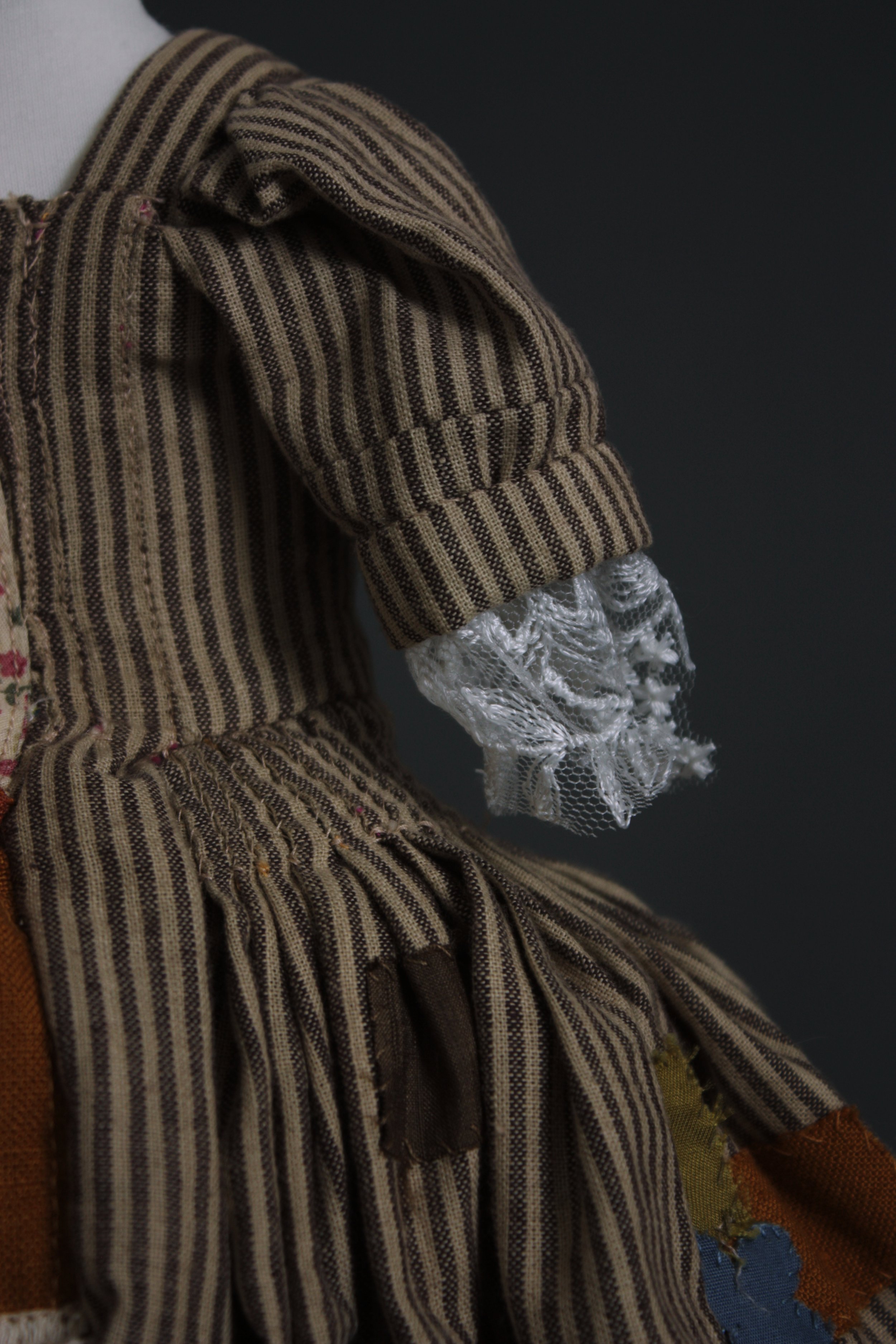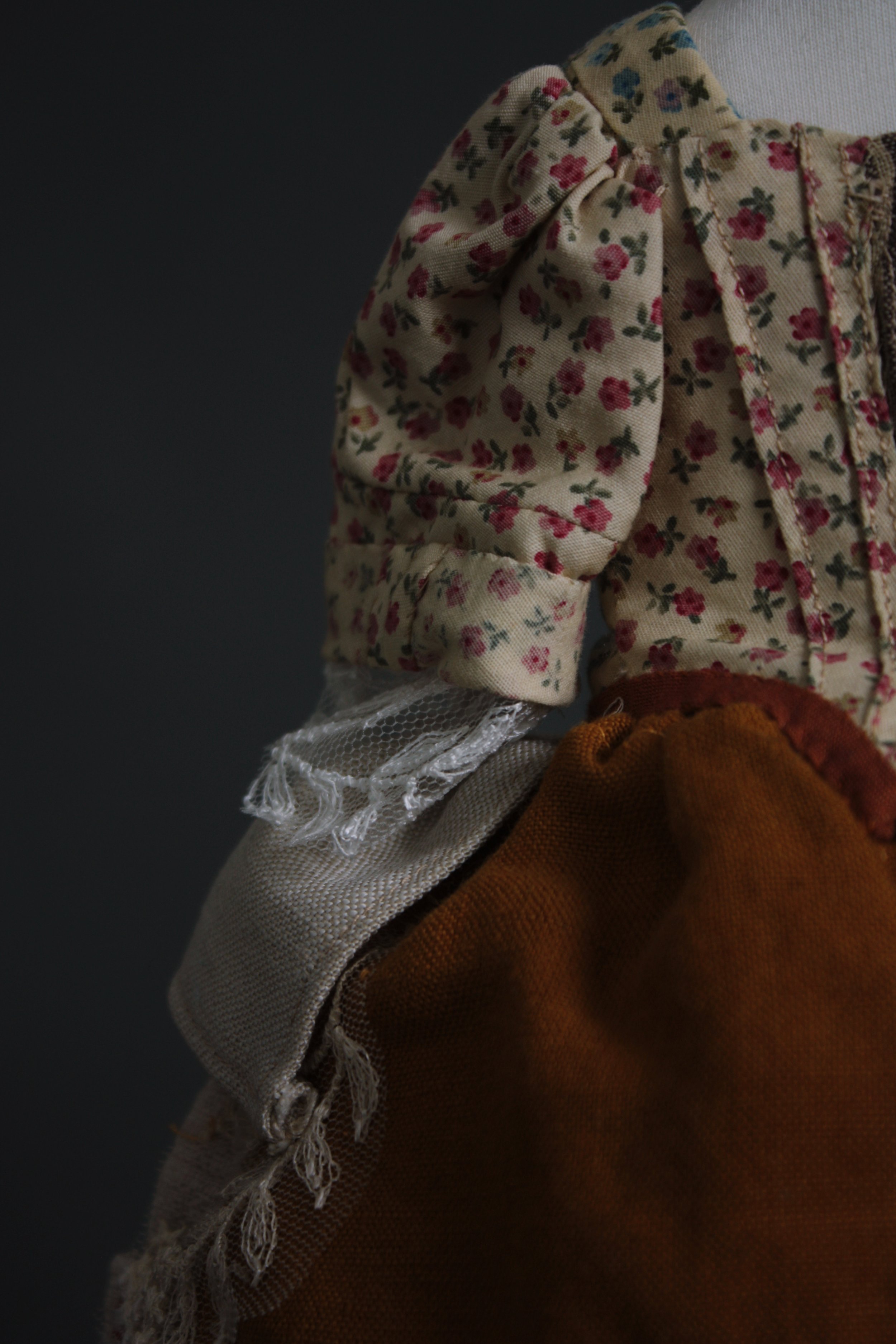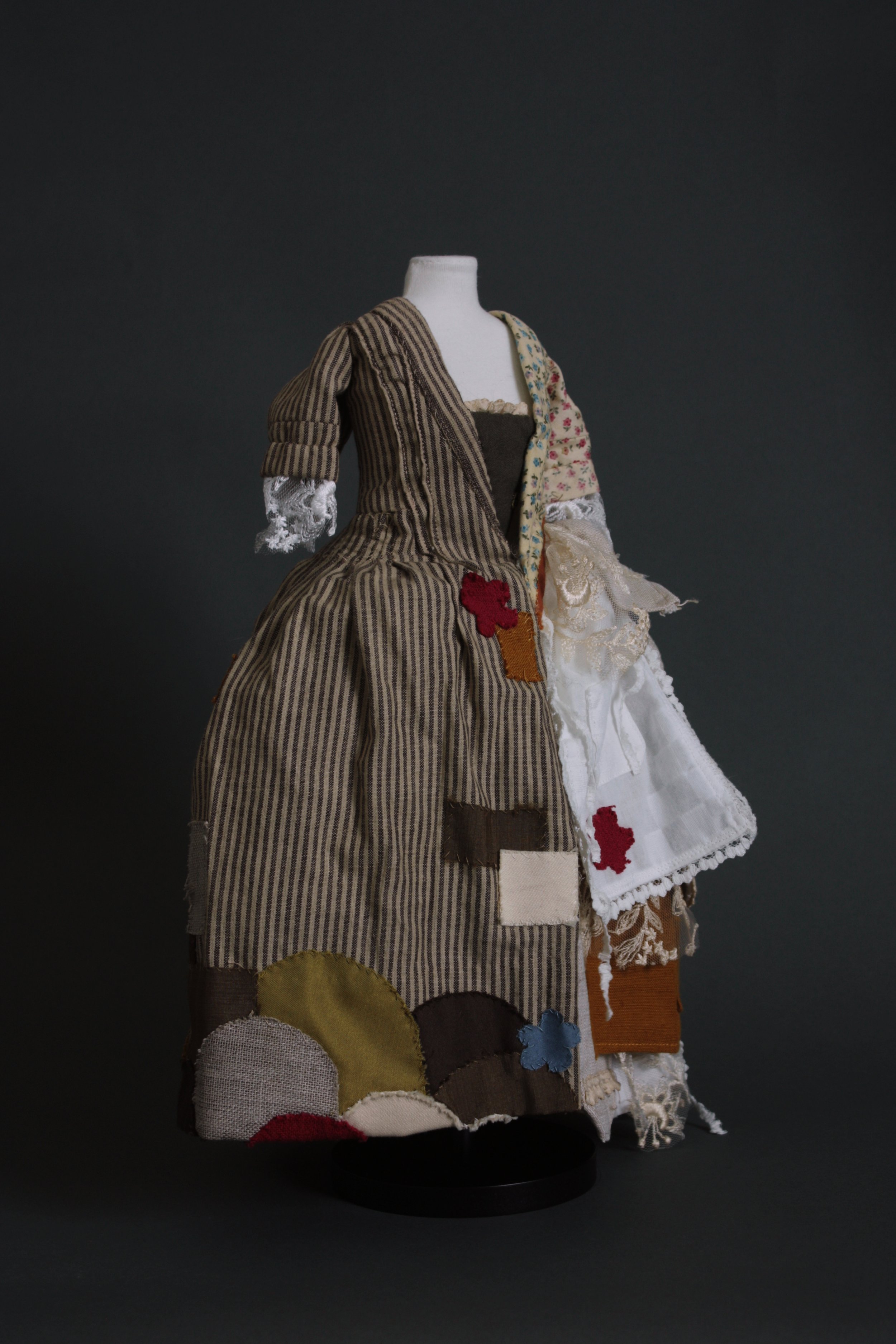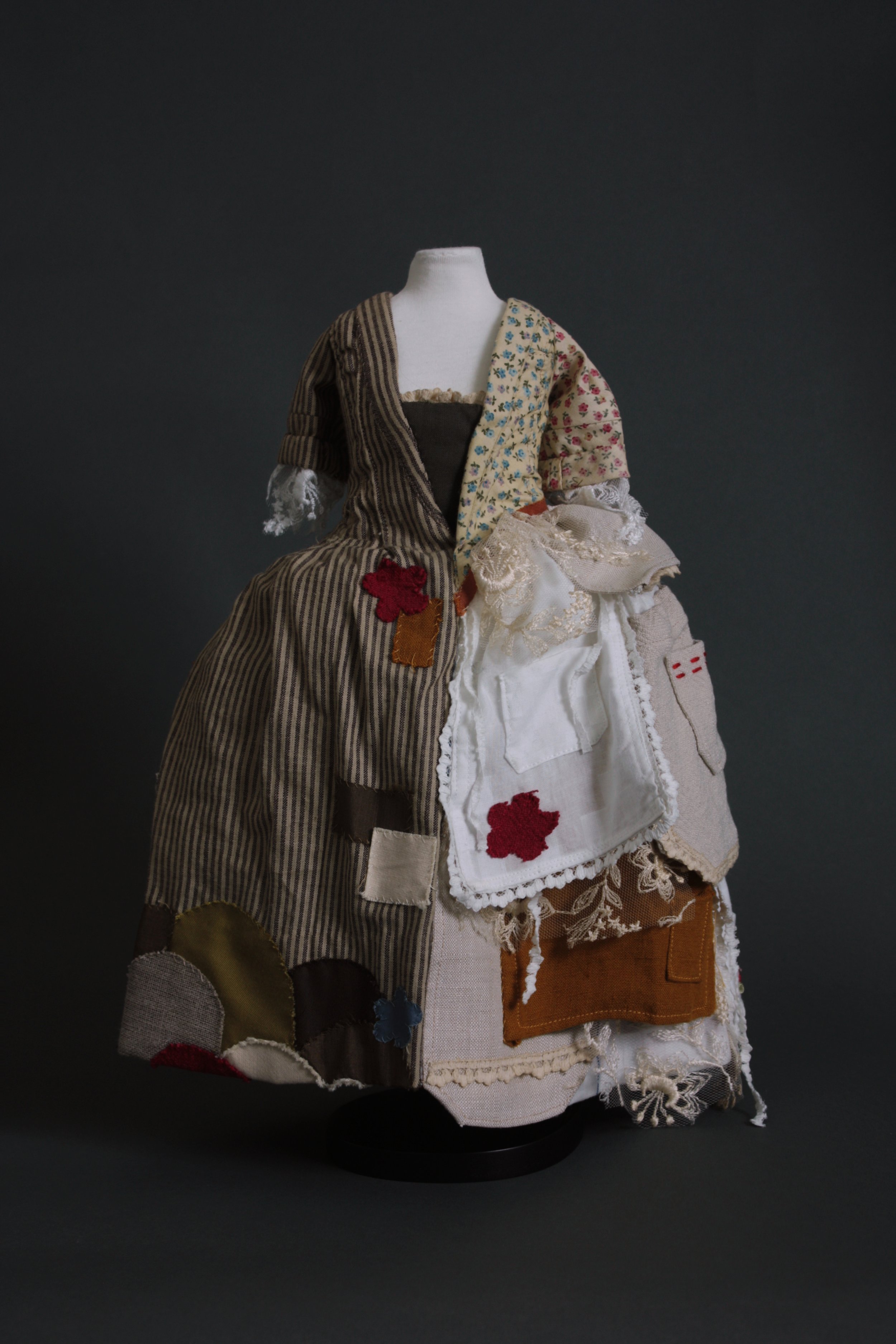
The housekeeper’s gown
The housekeeper’s gown
By Megan Lloyd
Inspired by a wealthy women’s decorative apron and made of recycled dress fabric, this piece pokes fun at rich women playing housekeeper, making an expensive dress out of servants’ aprons. The dress’s other half is made up of simple, recycled fabrics that would be accessible to servants of the house, patched to mimic the pattern of the original apron’s embroidery.
When looking at the museum’s archive collection, I was drawn to a decorative apron, labelled as ‘made from a dress’. I saw a very similar one in the V&A a few days later, the plaque explaining that they would be worn by wealthy women as a way of showing themselves to be good housekeepers. I couldn’t help but find this funny, while yes, these women would do the planning and budgeting, they would do very little physical work compared to housekeepers and servants who were really responsible for keeping the house running smoothly and yet got no credit.
I began this process by looking into embroidery trends to figure out when the fabric of the apron was made, finding almost identical examples from the 1720s and similar examples of aprons from between 1730 and 1760. This suggests, as the museum’s accession label said, that these decorative aprons were a micro-trend during this period. Having nailed down these dates, I was able to select a pattern from Patterns of Fashion (Arnold, 1972) for what would have been a very expensive dress. I decided to make it up in two halves; one of fabrics that servants would have had access to, patchworked to resemble the apron’s original embroidery, and the other with a patchworked and pieced bodice and skirt made up entirely of servant’s aprons.
In doing this, the dress highlights both the importance of those working as servants, maids, cooks and cleaners in these wealthy family homes and their role in recycling and preserving clothing. The art of mending and repurposing has been mostly lost today.
With our planet becoming ever more under threat from climate change and pollution, caused, in part, by fast fashion and the constant throwing away and buying of clothes, it is our responsibility to re-embrace the power of remaking. Patching and mending can, in its own way, be decorative and beautiful and we don’t need to be limited to making small items from big items, such as an apron out of a skirt. But in patching together multiple small pieces, it is possible to make something totally new and unique while also benefiting our planet and helping to slow the fashion industry.
References
Arnold, J. (1972). Patterns of Fashion 1: The Content, Cut, Construction, and Context of Englishwomen’s Dress c. 1660 - 1860. London: Macmillan.
V&A. (2022). Apron, 1700 - 1720 - The V&A. [online]. Available from: https://collections.vam.ac.uk/item/O362151/apron-unknown/







